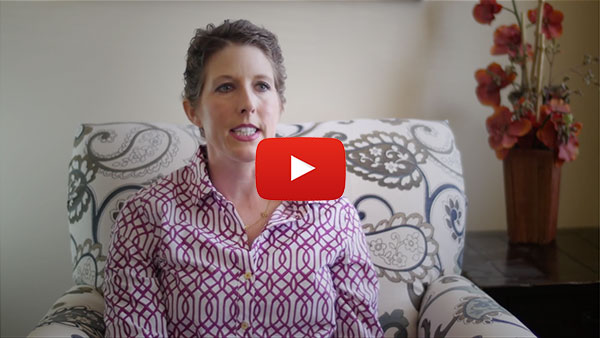The Reasons Why Insurance Companies Refuse to Cover Natural Medicine

It's a question patients ask us all the time: why doesn't insurance cover natural medicine? The fast answer to the question is that insurance limits our ability to help patients. We will see the convoluted bureaucratic nonsense that feeds one of the world's biggest industries at the expense of patient care.
To better answer your questions, we've provided an in-depth examination over five separate sections to look at the multiple factors involved. Throughout the article CAM (complementary and alternative medicine) represents a general term used to discuss natural medicine, alternative medicine and integrative medical practices. Finally, with over 13 years of being leaders in this challenging and rewarding field, we will be offering our insights within the article.
Part 1: The practical barriers to insurance coverage
Patients Want Natural Medicine and are Demanding it
The United States spends about $1.5 trillion on health care each year. About one-fifth of Americans believe the health system could be improved and almost everyone in the remaining four-fifths feels it should be revamped altogether. As a result of this dissatisfaction, four out of ten U.S. adults go outside the health system to use complementary, natural or alternative therapies. Some 600 million visits to these practitioners are made each year (which surpasses that made to conventional medical practitioners), and patients pay an estimated $30 billion out of their own pockets for such non-traditional care per year.
This coverage usually exists in 4 forms: (1) as a rider or supplement to the basic benefit package, which will often contain strict controls on its usage; (2) as a discount program where covered employees pay out of pocket but are eligible for discounts from fees or products (usually tied to an approved network of non-traditional practitioners); (3) as a defined, core benefit, which is managed by: limiting the type of non-traditional services covered (usually to chiropractic and acupuncture), requiring pre-authorization or referral by a primary care physician, or setting visit or dollar limits and higher co-payments than that for routine physician visits; and (4) as a benefit account, which typically has an annual dollar amount.
Where Do We Stand With Insurance Coverage?
Currently, there is some insurance coverage for alternative therapies such as chiropractic visits and acupuncture, but the prevalence of this type of coverage is nowhere near that of conventional treatments. Usually large employers (with more than 20,000 employees) are more likely to offer access to these non-traditional practitioners than medium or small employers.
But this coverage excludes a vast number of treatments, including almost all of natural medicine, in addition to the fact that those services that are covered are extremely limited and restricted.
If Consumer Demand for Natural Medicine and Alternative Therapies is So High, Why the Big Hold Up?
The White House Commission on Complementary and Alternative Medicine Policy (WHCCAMP) was formed in March of 2000 to address, among other things, issues related to access and delivery of CAM (complementary and alternative medicine). The 20-member Commission was established by the President's Executive Order No. 13147, and its primary task is "to provide, through the Secretary of Health and Human Services, legislative and administrative recommendations for ensuring that public policy maximizes the potential benefits of CAM therapies to consumers."
The Commission held a series of ten meetings in and around Washington D.C. over a span of two years. At these meetings, clinicians, researchers, medical educators, regulatory officials, policymakers, practitioners and others were asked to provide recommendations regarding Federal policies related to CAM. The Commission also solicited public testimony during a series of Town Hall meetings around the country. Overall, the Commission heard from approximately 1700 consumers, professional groups, societies and health care organizations. They also visited several medical institutions and CAM clinics throughout the country. One of the public policy issues examined by the Commission was coverage and reimbursement of CAM.
Stalled Progress
The Commission identified several barriers to coverage inherent in the healthcare industry. First, insurance and managed care executives interviewed by the Commission indicated that CAM therapies are not covered because there is a lack of evidence supporting their "medical effectiveness." The current climate of "runaway care," rising healthcare costs, and the constant stream of new technologies and drugs has left decision-makers in the insurance equation cautious about expanding any healthcare benefits. They are "concerned that their limited dollars be spent on care that has been shown to be safe and effective."
But to say that more research is needed on the safety and effectiveness of CAM is an over-simplification of the issue and does not even begin to address the underlying practical and theoretical problems involved. Admittedly, the body of research supporting the effectiveness of CAM is not as extensive as that supporting conventional therapies. But this fact is not surprising given the astronomical costs associated with such research, which are costs that are more easily shouldered by pharmaceutical companies (that have direct, invested financial interests) than by the multitude of individual practitioners that make up the hugely diverse field of CAM. While the industry average might be $30 billion, the industry itself is made up of everyone from internet peddlers to legitimate practitioners. Meanwhile, single pharmaceutical companies, such as Pfizer, report revenues well-above CAM's entire industry average.

CAM Being Squeezed at the Root of the Problem
The economic barrier aside, another related barrier to this lack of research is that no universal theoretical model currently exists as to how to integrate CAM with conventional therapies. While the Commission's recommendation is that research be conducted to compare conventional and CAM approaches for the same condition, to test the effectiveness of individual and combined CAM treatments and to test CAM treatments offered in conjunction with conventional therapies, there is no consensus or universal "standard of care" within the diverse CAM world as to treatment or integration.
In other words, there is no readily available design for a CAM benefited model. Before the process could even begin, CAM practitioners would have to sit down and reach a consensus on which therapies should even be included as the subject of research for treatment of a particular condition, and how such therapies would be integrated with conventional treatments for that particular condition, which would be no easy task. And a consensus would also have to be reached regarding the research methodologies that would be used to evaluate the effectiveness of CAM treatments.
While the classic evaluation of the effectiveness of treatment focuses on "response," or alterations in physical condition, this marker can ignore the serious impairment that such treatments can have on patients' quality of life or even length of life, such as with cancer treatment. In contrast, CAM often places equal emphasis on the total effect that treatments have on patients, including patient comfort, functionality, energy, sleep quality, pain, and mood. Would the criteria used to assess the effectiveness of conventional medicine be expanded to include CAM's criteria regarding quality and length of life? Or would CAM treatments, which often operate from a different clinical paradigm, be squeezed into a conventional model in determining which treatments should be included in coverage?
Scare Tactics
Another related issue would be how the safety of CAM treatments would be assessed for the purpose of including them in coverage. CAM therapies and conventional therapies are held to different standards, and any examination of the safety of CAM treatments would most likely be subject to much more scrutiny than conventional treatments. Currently, more than 100,000 Americans die each year from complications caused by prescription drugs being used as intended, and more than 2 million are hospitalized with such complications.
But the American public has come to accept such occurrences.
These statistics and the side effects associated with conventional treatments have never raised pervasive concern. In contrast, adverse events associated with CAM treatments get widespread alarmist attention. Indeed, the Commission stated that in order to cover CAM, information would first be needed on how such treatments affect worker productivity, morale, recruitment, retention and stress. It is doubtful that conventional treatments were subject to such evaluations or that such preconditions were placed on their coverage. It remains to be seen how these differing standards would affect approval of insurance coverage of CAM.
The Safety Net Tied to the Insurance Coverage Story
According to the Commission, the research regarding safety and effectiveness is needed to form the criteria used by insurance companies and managed care organizations in deciding what is "medically necessary" when it comes to treatment and claims. Insurers and HMO's rely greatly on medical necessity criteria to define the extent of a benefit, manage the use of it, and make claims payment decisions. As stated by the Commission, these criteria are also used to control use of and spending on health care services, determine cost estimates on which premiums are based, and "maintain the financial soundness of the insurance and managed care industries."
The actual process of determining what is medically necessary is based on studies and criteria developed by academic medical institutions, professional organizations, private companies, and even the insurers and managed care companies themselves. But as stated by the Commission, currently, "few criteria are available to guide practitioners in deciding the medical or, more generally, the clinical necessity of CAM interventions." Until this gap in research regarding safety and efficacy, and therefore clinical necessity, is filled in, this practical barrier to coverage remains in place.
Medicare - The Government Controlled "Gate Keeper"
Additional barriers relate specifically to Medicare coverage of CAM. Under Medicare's 55 benefit categories, services and products must be "reasonable and necessary" in order to be covered. The criteria for determining what is "reasonable and necessary" are very specific. Once again, without the research on CAM's safety and efficacy, it is difficult to work such treatments into the "reasonable and necessary" criteria. The Commission delineates further barriers to CAM's inclusion in Medicare coverage, including anti-kickback rules, which restrict referrals between conventional and CAM practitioners, making it difficult to provide for Medicare coverage in integrated practice settings.
Helping Bring The Future of Medicine into Place
At Envita, we believe that regardless of insurance coverage, the issue of data and research to support the efficacy and safety of advanced natural medicine is critically important. We are attempting to create, through our treatment protocols, a standard for the industry. We are using treatments that are already based in the published peer-reviewed scientific literature so that the clinical evidence of their effectiveness can be expanded. In addition, we have created quality of life studies so that there is tangible data to also support the benefits of advanced natural medicine on the overall well-being of patients. As more practitioners and treatment facilities do the same, the body of support for CAM will begin to grow, which inevitably will be a step towards removing some of the practical barriers discussed above.
Part 2: Overall Cost-Effectiveness
Our first entry examined some of the issues identified by the White House Commission on Complementary and Alternative Medicine Policy (WHCCAMP), including a lack of research regarding the safety and "medical effectiveness" of CAM treatments. In part II of this series, we will continue our examination of the remaining practical barriers to coverage, including the lack of adequate information on the use, costs, and overall cost-effectiveness of CAM, as well as the operational hurdle presented by uniform billing codes.
The Data Doesn't Support Their Claims
Another barrier identified by the Commission is the lack of adequate information on the use, costs, and overall cost-effectiveness of CAM. As described by the Commission, there currently exists an "information vacuum" when it comes to issues such as cost estimates for CAM therapies and treatments, which makes it difficult for purchasers and providers to comfortably and practically respond to consumer demand. The lack of information regarding the usage of CAM also does not bode well when it comes to insurance and managed care companies' fear of runaway care.
But are the fears of costs and runaway care really justified? Since 1996, Washington State has had a law on its books that requires that private health insurance covers all licensed/certified categories of health care providers on an equal basis. Known as the "every-category-of provider" law, the statute stipulates that health plans cannot exclude any category of health care professional licensed to provide care for a condition covered by the basic health plan. (1) So under the law, a carrier must allow a subscriber to choose between providers in different categories when both are licensed to treat the condition. For example, for back pain, a subscriber may choose between an internist and an acupuncturist. (Not surprisingly, the law has endured its fair share of legal battles with the insurance industry.)
CAM Lowers Cost and Allows Patients Important Health Options
Washington State therefore served as the perfect "laboratory" for examining financial risks involved in CAM coverage in a 2006 study published in the American Journal of Managed Care.(2) The objective of the study was to examine how insured people used CAM and what role it played in overall health expenditures. The study examined covered services provided by four licensed provider types: acupuncturists, chiropractors, massage therapists, and naturopathic physicians. It analyzed three different health care plans involving a total of 600,000 enrollees ages 18 to 64 years, who were continuously enrolled for 12 months in a single, private health insurance plan.
The authors concluded that "Payers have resisted covering CAM providers in part because of a fear that coverage would result in large, steadily increasing and unpredictable expenditures for CAM services, not unlike the history of prescription drug coverage. Our study performed six years after the mandated inclusion of CAM benefits in Washington state suggests that this is not going to be the case."
According to the authors, while the number of people using CAM insurance benefits was "substantial," the impact on insurance expenditures was "modest." The authors concluded that their data "suggests that insurance coverage of licensed CAM providers does not lead to runaway utilization."

Is CAM More Cost-Effective?
What about cost-effectiveness of CAM treatments? At least some data already exists on the cost-effectiveness of CAM when used in the area of prevention. Mutual of Omaha conducted a study with 333 heart disease patients. 194 of those patients followed comprehensive lifestyle changes including a low-fat plant-based diet stress management, exercise, and group support. 139 patients were in the control group.
Those who followed the lifestyle changes were able to avoid invasive coronary bypass procedures and coronary angioplasty for at least 3 years without increasing the risk of a heart attack, stroke, or death. Savings were estimated to be about $29,500 per patient. As a result of the study, Mutual of Omaha now covers the lifestyle modification program.
Similarly, a Highmark Blue Cross Blue Shield lifestyle modification study found significant decreases in cholesterol, blood pressure, weight and depression, with cost savings as much as 30-60 percent. Highmark estimates that it saved over $16,000 on each patient who would have required surgery or angioplasty. In another study, Highmark found that claims were reduced from around $546 per patient to $273 in the year after entering the lifestyle modification program.
Studies in the area of chronic pain and arthritis have shown similar cost-effective results from CAM interventions. In one particular study, physician visits decreased by 43% for those arthritic patients using CAM, which saved $648 per rheumatoid arthritis patient and $189 per osteoarthritis patient. Still, insurance companies state that they need more information on CAM's cost-effectiveness for specific conditions.
Convenient Uniform Billing Codes = More Barriers
But even if such fears regarding costs and utilization are overcome, further practical barriers still remain. From an operational standpoint, government agencies, insurance companies and managed care organizations use uniform coding systems for filing of claims and data management purposes. These codes drive much of healthcare and have taken on even further importance given the requirements of the Health Insurance Portability and Accountability Act (HIPPA), which greatly impact claim filing.
The act now contains provisions that impose large fines per code for incorrect submitting and processing of claims. Insurance companies are even fined under the act for paying fraudulent claims. This coding data has also helped create a large database of information that is used by insurers to design health care benefit plans, set premiums, conduct actuarial analyses, manage provider networks and the costs and use of health services. Policy makers and health researchers also use this database of information to conduct clinical and health services research upon which public policy programs are grounded.
But these uniform coding systems have developed alongside conventional healthcare and they have a limited capacity to capture CAM practices and products. As stated by the Commission, this limiting coding capability presents a barrier to "health services research on the safety, benefits, and cost-effectiveness of CAM interventions, as well as on the efficiency of models of integration and collaboration, where claims data are needed by researchers." It goes without saying that without standardized coding for CAM treatments, implementation of coverage and compliance with HIPPA regulations is difficult at best.
The Never-Ending Story of What is Really Happening
But while these practical barriers to coverage loom large, they are not insurmountable. Theoretically, a concerted and unified effort by CAM practitioners, governmental agencies, and insurance providers to develop universal standards of care, pursue coordinated research and fill in the "information vacuum," should go a long way towards expanding insurance coverage to more and more CAM treatments and practitioners. Of course, whether that effort is actually undertaken remains to be seen.
Part 3: The Political Barriers
In Part 3 of this series, we will examine the political barriers to coverage. While the practical barriers can potentially be overcome, the political barriers present a different set of challenges. But while these practical barriers can be overcome, the political barriers to coverage are a different matter. Because the discussion of political barriers will be an extensive one, we have had to split it up into two parts. As a result, our discussion of insurance coverage of CAM will now comprise Part 3 and Part 4 of this series. In order to understand the political barriers to coverage, we first need to understand the politics of the medical system itself.
Regulating the Standard of Care: Clinical Practice Guidelines
As discussed in Part 2, insurance coverage largely depends on a system of uniformity, from consensus on appropriate and effective treatment to billing coding. The advent of clinical guidelines has played a large role in standardizing medical care.
Until recently, doctors were relatively free to rely on their own experience or judgment when selecting the best treatment for their patients. For example, in the treatment of high blood pressure, a doctor could recommend lifestyle changes or prescribe drugs. The doctor could decide which drug to prescribe, set a target blood pressure, and decide how long to wait before changing the prescription if the target blood pressure was not reached.(1) But over the past decade, governmental bodies, medical associations, and even insurance companies have begun producing clinical practice guidelines to standardize treatment decisions.(1) But while these guidelines are helping to set the standard of care, the tradeoff is physician freedom.(2)

Penalties For Doctors Who Want to Help Their Patients From Regulators and Competitors
As clinical practice becomes more standardized, physicians have become more restricted. Those who step out of the standardized practice guidelines make themselves vulnerable to litigation and become targets of their state's medical boards. One of the worst examples of the penalties associated with stepping outside these imposed practice boundaries. The Lyme disease treatment guidelines were written by the 14-member panel of the Infectious Disease Society of America (IDSA). For the physicians who have stepped outside of these guidelines, most have been hauled before their state's medical licensing boards and have had their licenses suspended. One doctor was even sued by an insurance company for $100 million for his treatment of Lyme disease patients.
Conflicts of Interest are Creating the Guidelines
So given that clinical guidelines are largely shaping the practice of medicine and concomitantly, insurance coverage and reimbursement, we need to take a closer look at them. In an article that appeared in 2002 in the Journal of the American Medical Association, a group of researchers and physicians set out to examine the relationship between the authors of clinical practice guidelines and the pharmaceutical industry.(3)
As stated in the article, at the time it was written, no data existed in the literature regarding the potential financial conflicts of interest for authors of clinical practice guidelines (CPG's). These relationships "may be particularly relevant since CPG's are designed to influence the practice of a large number of physicians." The article examined 100 authors of 37 different CPG's. Out of those authors, 87% had some form of interaction with the pharmaceutical industry. Fifty-eight percent had received financial support to perform research, and 38% had served as employees or consultants for pharmaceutical companies. Fifty-nine percent of the authors had relationships with companies whose drugs were considered in the guideline they authored, and of these authors, 96% had relationships that predated the guideline creation process. Interestingly, almost 20% of the authors believed that their colleagues' relationships influenced the recommendations they put forward.(3)
Lyme Disease is a Great Example
Once again, the IDSA guidelines for the diagnosis and treatment of Lyme disease provide a concrete example of these conflicts of interest. The IDSA guidelines have been widely criticized as inadequate and disastrous for those infected with the disease. The Attorney General of Connecticut, Richard Blumenthal, was even prompted to conduct an anti-trust investigation of the IDSA, suspecting that the guidelines process was tainted by the panel members' conflicts of interest.
Out of the 14 member panel, 6 of the panelists or their universities hold patents associated with Lyme disease or its co-infections; 4 received funding from test kit manufacturers for Lyme disease or its co-infections; 4 were paid by the insurance companies to write Lyme policy guidelines or serve as consultants in legal cases; and 9 members or their universities received money from Lyme disease vaccine manufacturers.
The Results Speak for Themselves
It is possible that as a result of these conflicts of interest between the authors of CPG's and the pharmaceutical industry, the clinical guidelines are not necessarily based on high-quality evidence. In an article published by the Public Library of Science (PLoS) in 2002, CPG's from the United States, Canada, and Europe were examined for 3 conditions – diabetes mellitus, dyslipidemia, and hypertension.(1)
The authors of the study set out to evaluate the quality of the evidence (based on the types of studies used, their internal validity, clinical relevance, and applicability) underlying therapy recommendations in evidence-based clinical practice guidelines. The authors found that of the 369 cardiovascular risk management recommendations in nine prominent national evidence-based guidelines, less than one-third (only 28%) were directly supported by high-quality evidence.(1)
Indeed, with regard to the IDSA guidelines for the diagnosis and treatment of Lyme disease, out of the 400 scientific articles cited by the panel as support for their guidelines, about half were written by the panel members themselves. Meanwhile, a large body of contradictory scientific literature was ignored.
Did We Mention the Cholesterol Drugs? The Statin Game
A perfect example of how financial conflicts of interest and the quality of the evidence can affect the development of CPG's is the radical revision of the guidelines regarding cholesterol-lowering statins.
Prior to 2001, cholesterol-lowering statin drugs were used to treat adults with occlusive vascular disease. But in 2001, the clinical guidelines for diagnosing and treating high cholesterol in adults were revised, and a substantial proportion of the healthy population was put on statin drugs for preventative measures. The number of Americans for whom statins were recommended was increased from 13 million to 36 million. The 23 million additional Americans who were to receive cholesterol-lowering medication did not yet have coronary heart disease, but were estimated to be at a moderately elevated risk of developing it. In 2004, the National Cholesterol Education Program again revised the guidelines, this time adding 8 million more Americans to the list of candidates for cholesterol-lowering drugs.
In 2007, John Abramson, MD, of Harvard Medical School, and James Wright, MD, of the University of British Colombia co-wrote a commentary entitled, "Are Lipid-Lowering Guidelines Evidence-Based?," which appeared in The Lancet.(4) According to Abramson and Wright, in revising the guidelines, the guideline authors did not rely on the data that already existed from primary prevention trials. Instead, the guidelines cite seven and nine randomized trials in support of statin therapy for prevention of cardiovascular disease in women and people over 65 years of age.
But not one study provides such evidence to support the use of statin drugs in this manner. According to Abramson and Wright, the absolute risk reduction in coronary heart disease was small – about 1.5% – and to reach this minimal reduction, 67 people would have to be treated for 5 years to prevent one coronary heart disease event. Further, their analysis suggested that this minimal benefit is limited to high-risk men aged 30-69. Statins did not reduce total coronary heart disease events in 10,990 women in the primary prevention trials.
As a result, Abramson and Wright concluded that "lipid-lowering statins should not be prescribed for true primary prevention in women of any age or for men older than 69 years. High-risk men aged 30-69 should be advised that about 50 patients need to be treated for 5 years to prevent one event." In other words, millions of Americans could be taking statin drugs like Lipitor without any clinical proof that they're beneficial to disease prevention or their overall health.
Further, the authors noted that "in our experience, many men presented with this evidence do not choose to take a statin, especially when informed of the potential benefits of lifestyle modification on cardiovascular risk and overall health." Unfortunately, most people are not presented with the evidence or informed of the potential benefits of lifestyle modifications because of the various controls on the practice of medicine discussed above.
The 'LA Times' Speaks Out — Follow the Money
According to the LA Times, most of the doctors and experts on the committees that wrote these revised guidelines had financial ties to the pharmaceutical companies that produce statin drugs. (5) These new guidelines turned Lipitor, among others, into the world's bestselling prescription medications. Lipitor is manufactured by Pfizer, which made more than $10 billion in sales of the drug in 2004 alone.
The implications of the politicization of medical care are far-reaching and directly affect insurance coverage for CAM. If pharmaceutical companies are largely controlling the standardization of medical care, how on earth is CAM going to gain entry into the system? The extremely diverse field of CAM does not possess the political power or economic stature to challenge the pharmaceutical companies.
The issue of CPG's does not even begin to touch on the other influences of the pharmaceutical companies on the practice of medicine, including the $8,000-$13,000 per doctor that the industry spends each year peddling its products, buying gifts and paying for travel and other favors in an effort to influence treatment decisions.(6) Nor does it touch on the hundreds of millions of dollars spent each year on lobbying by Pharma and insurance companies alike.(6) Indeed, these other influences have a direct and powerful effect on the practice of medicine and the direction of medical research in our country.
Part 4: Political Barriers Continued
In Part 4 of this series, we will continue examining the political barriers to insurance coverage of CAM.
Safety, Efficacy and Cost-Effectiveness Data Spelled Out
In the first two parts of this series, we examined some of the practical barriers to insurance coverage of CAM (complementary and alternative medicine), identified by the White House Commission on Complementary and Alternative Medicine Policy (WHCCAMP). Some of those barriers included a reported lack of adequate information on the overall safety and efficacy of CAM therapies, as well as a lack of information on their cost-effectiveness.
This information is critically important because it forms the foundation upon which coverage decisions are made, including everything from defining benefits, to designing healthcare plans, to making claims payment decisions and maintaining the financial soundness of the industry. Conventional medical coverage is based upon such information and so coverage of CAM will be denied until it meets the same standards. But what about the quality of the information upon which conventional medical coverage decisions are made? How much of that information is reliable and free from non-scientific influences?
Clinical Trials
According to an article in the Journal of the American Medical Association (JAMA), recent studies have found that when investigators and medical researchers have relationships with pharmaceutical or product manufacturers, they are less likely to criticize the safety or efficacy of these agents.(1) Furthermore, this same JAMA article cited a study that examined the relationship between the source of funding for clinical trials and their reported outcomes.(1)
The authors of the study determined that there was a significant association between positive results in general internal medicine clinical trials and funding from a pharmaceutical manufacturer.(1) These findings are not insignificant. According to the LA Times, in two and a half decades, drug companies' funding of biomedical research (which has mainly been conducted at universities) has risen from $1.5 billion to $55 billion.(2)
Pharmaceutical Companies Know How to Play the Game
The concern over financial conflicts of interest is not limited to safety and efficacy data. Over the past decade or so, widespread use of economic analysis of pharmaceuticals and medical devices has become a valuable tool for healthcare decision-makers to assess the costs and benefits of drug therapies. These economic studies are playing an increasingly important role in healthcare decision-making because of the rising costs in the industry.
This economic data, otherwise known as pharmacoeconomic studies, are used by managed care organizations and insurance companies, among others, to develop their coverage and payment decisions.As a result, pharmaceutical companies are increasingly conducting such studies to provide evidence that their products are cost-effective. And, these drug manufacturers face increasing competition to show that their product offers more value and quality in terms of price than their competitors. But various articles have been written regarding concern over the lack of principles governing such studies. Concern has been raised over the validity, methodological quality, as well as the potential for bias and misuse. (1), (3), (4), (5)
Pharmacoeconomics has developed into a complex specialty of its own and at least one article published in JAMA showed once again that pharmaceutical sponsorship of economic analysis is associated with reduced likelihood of reporting unfavorable results.(1) Compounding this problem is the fact that many of those who need to use this pharmacoeconomic data are still not equipped to critically evaluate their quality or interpret them properly. The FDA was even prompted to issue guidelines enumerating principles it would use to review pharmacoeconomic claims for promotional purposes, in the hopes of addressing the lack of regulatory standards and potential for biased results.(4))
Let's Take a Look at the “War on Cancer”
Nowhere is this debate over safety, efficacy and cost-effectiveness more salient than in the area of cancer treatment. In an article published in 1993 in the Journal of the National Cancer Institute, issues regarding the efficacy and cost-effectiveness of cancer treatments were examined.(6) According to the authors, "many cancer treatments are, unfortunately, ineffective. Cancer mortality rates have not changed substantially in the past decade, despite a 'War on Cancer.'"(6) The authors pointed out that while oncologists have focused on the question of whether treatment causes a "response," society is asking whether treatment "increases survival or quality of life enough to justify the dollars spent compared with alternative uses of the same money…."(6) Given that now, in 2013, cancer is still claiming a life every 50 seconds, the same question remains: how effective are our current treatment methods?
Chemotherapy: Only 2% Effective
In a highly controversial article published in 2004, three oncologists assessed the impact of cancer drugs on survival rates in Australia and the United States.(7) The authors analyzed the results of all randomized, controlled clinical trials performed in Australia and the U.S. that reported a statistically significant increase in 5-year survival due to the use of chemotherapy in adult cancers. Data from 1990-2004 were examined.
The authors found that the overall contribution of chemotherapy to the five-year survival rate in adults was about 2%. In other words, as stated by one of the authors, Graeme Morgan, during a radio interview, "if there was no chemotherapy…the survival rate of all patients with cancer would drop from 62% to 60%." As summarized by the authors, "despite the early claims of chemotherapy as the panacea for curing all cancers, the impact of cytotoxic chemotherapy is limited to small subgroups of patients and mostly occurs in the less common malignancies." (7)
Chemotherapy Can Cause Devastating Side Effects
The authors addressed the issue of why so many patients undergo chemotherapy treatment when the benefits are generally so small. According to the authors, the answer is a game of statistics. The medical profession often presents the benefit of chemotherapy to patients in terms of relative risk instead of giving a straight assessment of the impact of such intervention on the overall survival rate. Ralph W. Moss, Ph.D., explained this difference in his March 5, 2006 newsletter.(8)
Dr. Moss explained that while relative risk is technically accurate, it has the effect of making the intervention look more beneficial than it truly is. For example, as explained by Dr. Moss, if receiving a treatment causes a patient's risk to drop from 4% to 2%, this can be expressed to a patient as a decrease in relative risk of 50%, which sounds very impressive. But another and equally accurate way of explaining this reduction in risk is to say that the treatment offers only a 2% reduction in risk, which most likely would not impress most patients.
The presentation of these statistics in relative versus absolute terms has even been shown to influence treatment recommendations of oncologists.(8) Ironically, one of the criticisms of the 2004 chemotherapy study was that it examined absolute instead of relative benefit of chemotherapy to patients. The truth of the matter remains that if a seriously ill cancer patient was presented with a chemotherapy regime that would cause only a 2% reduction in risk while causing numerous and devastating side effects, he or she might opt for another form of treatment.
Using Conventional Cancer Treatment in a Correct and Balanced Way
This argument, of course, is not to say that cancer drugs should not be covered by insurance. Indeed, at Envita, we treat certain patients with chemotherapy (alongside our natural treatments), as it still has a place in helping with particular malignancies. But the limitations and harsh side effects of these drugs must be recognized and furthermore, they should not be heralded as the answer to cancer.
Nor are we saying that all clinical trials involving conventional drugs should be dismissed or questioned as tainted by conflicts of interest. The point is that before CAM coverage is denied on the basis of a purported lack of quality data regarding efficacy and safety, the same standards have to be applied to conventional medical coverage. Presumably, medical coverage decisions should not be based on just any data – the quality and reliability of the data should also be examined. And as discussed in Part I of this series, a threshold of what constitutes an "effective" and "safe" treatment must be established. If the threshold is an absolute benefit of only 2%, one has to wonder why alternative treatments are not already covered by insurance.
Both the political barriers discussed in Part 3 of this series, as well as the problems associated with the pharmacoeconomic model discussed here present considerable challenges to CAM's gaining entry into the conventional medical system and accompanying insurance industry. Not surprisingly, these political barriers are not easily overcome, even when the scientific data fails to support the safety and efficacy of Big Pharma's treatments. Let's look at the real world example of bio-identical hormones.
An Example of Political Barriers to Entry: The Bio-Identical Hormone Debate
Over the past decade, concern began to arise over the risks associated with synthetic hormone replacement therapy (HRT), used for the treatment of menopausal complaints and associated conditions. These synthetic hormones contain hormones that do not match those found in the human body, including estrogens from horses' urine.
In 2002, the U.S. government-sponsored Women's Health Initiative (WHI) published a study showing a relationship between HRT and an increased risk in breast and uterine cancers, heart attack, stroke, and dementia.(9) The study involved 16,608 healthy postmenopausal women with a uterus, ages 50-79 who were randomized to either a test or placebo group. The test group received a combination of synthetic hormones, and the placebo group received none. The National Institute of Health had to halt the first part of the WHI study, because the results showed: a 26% increase of invasive breast cancer for those women who received the synthetic hormones over the placebo; a 29% increased risk of myocardial infarction or death from coronary heart disease; a 41% increased risk of stroke; a 200% increased risk of blood clots.(9) The sales of synthetic hormone therapies dropped almost 50% immediately, as patients and physicians began utilizing bio-identical hormones instead.
Bio-identical hormones, unlike synthetic ones, match the structure and function of hormones naturally produced in the body. While synthetic hormones are produced by drug companies, bio-identical hormones were at that time mainly produced by compounding done by individual pharmacists.
Wyeth, the pharmaceutical giant that owns the Premarin synthetic hormone, saw a 68% decline in sales, from over $2 billion in 2002 to $880 million in 2004. Wyeth filed a petition with the Food and Drug Administration (FDA) in 2005 to stop the practice of compounding bio-identical hormones by individual pharmacists. Instead, in May of 2006, the FDA notified Wyeth of quality lapses in its manufacturing plant in Puerto Rico.
But then in January of 2008, the FDA announced that there was no evidence that bio-identical hormone therapies are safer than prescription hormones made by drug companies. Still, synthetic hormone replacement therapy is generally covered by insurance while bio-identical usually isn't. The bio-identical hormone debate is just one example of the barriers facing any CAM treatment that would take away from the sales of the pharmaceutical giants, regardless of the purported requirement of safety and efficacy data. But now let's look at the brightside.
Part 5: How the barriers to insurance coverage of CAM may not necessarily be a bad thing
Barriers to insurance coverage of CAM are not necessarily a bad thing. In the last part of this series, we will weigh the pros and cons of insurance coverage of CAM and examine whether it is even in the best interest of patients and the profession.
At first glance, insurance coverage of CAM sounds like a positive thing. Without insurance coverage, patients' access to CAM therapies and treatments is limited by their ability to pay. Many patients are unable to obtain these treatments because they are not covered under their health plan, and they do not have the means necessary to pay for out-of-pocket care.
Insurance coverage would open up widespread access to this area of medicine. For the profession as a whole, insurance coverage also appears to be a good thing, at first blush. Insurance coverage would seem to signify acceptance by large players in the mainstream medical system and would go a long ways towards truly integrating the two systems. It would also greatly expand CAM practitioners' patient base, as lack of insurance coverage has been identified as the main reason patients do not seek CAM treatments (according to a study cited by the White House Commission on Alternative and Complementary Medicine Policy).
What is the Downside?
The White House Commission on Alternative and Complementary Medicine Policy has pointed out that because patients who seek CAM treatments are paying out of their own pocket, they tend to take a serious interest in their treatment and participate fully in their care. It's assumed, if these treatments were to be covered by insurance, patients would lose their motivation to take an interest in their care. But this reason is small consolation to patients who desperately want access to CAM treatments but are blocked by financial limitations. Presumably, they are already taking a serious interest in their health, which is why they have taken the time to examine other treatment options in the first place.
On the other hand, concern over quality of care does raise a serious issue as to whether insurance coverage is really a step in the right direction. In Part I of this series, we reported that about one-fifth of Americans believe the current health system could be improved, and almost everyone in the remaining four-fifths feels it should be revamped altogether. As a result of this dissatisfaction, four out of ten U.S. adults go outside the health system to use complementary, natural, or alternative therapies.
Some 600 million visits to these practitioners are made each year (which surpasses that made to conventional medical practitioners). Largely, this dissatisfaction is the result of the problems and constraints imposed by the insurance industry. In our blog article entitled, "Why Are Patients Unhappy with Their Doctors," we reported on how the average appointment with a traditional medical doctor is now only 11 minutes in length. Patients are often rushed through appointments. One of the reasons that patients' access to and time with their doctors is so constrained is because traditional practitioners are under pressure from insurance companies to keep appointments short.
Individual Attention is Critical to the Healing Process
Not surprisingly, so many people are going outside of the mainstream medical system for care because they are looking for individualized attention and a better quality relationship with their physician. These features are the hallmark of a CAM-approach to care, and in particular, a natural medicine approach, which is focused on identifying the root cause of illness.This approach is different from traditional medicine's approach, which is often focused only on treating the symptoms or manifestations of the root cause. Individual attention and personalized treatment plans are considered by natural medical practitioners to be vital elements in the healing process. The amount of time a doctor spends with a patient to determine the root cause of illness is one of the greatest benefits that natural medicine offers.
Patients who are disenchanted with the traditional medical system are often seeking the empathy and moral engagement provided by CAM practitioners. By giving insurance companies access to (and control over) CAM, it may be a step towards destroying the very fabric of the profession by suffocating patient care and severely limiting treatment options. CAM could take on the same constrained doctor-patient interaction, impersonality, and dehumanized care that many fault the traditional medical system for.
The Physician Has the Freedom to Treat the Patient Without Restrictions
As a related concern, physician freedom and autonomy is paramount to the practice of CAM. Because the CAM approach to patient care is highly individualized, practitioners, such as naturopathic physicians, will often draw on a variety of treatments, which will be different for each patient, depending on the root cause of illness, symptoms, lifestyle factors, and other variables affecting the patient's particular ailment.
As a result, the practice of CAM does not lend itself well to standardized care and the attendant Clinical Practice Guidelines (which largely dictate the standard of care) described in Part III of this series. The insurance system depends largely upon uniformity to function – care must be standardized, because the system would fall apart if payment decisions had to be made on a case-by-case basis for every patient. Of course, that is not to say that CAM is devoid of agreement as to how to treat patients, but there is still a lot of variety in treatment methods in this extremely diverse field. The concern is that insurance coverage would signal the end of CAM practitioners' ability to use the treatments and therapies that they believe best serve their individual patients.
Let's Look at Osteopathic Medicine
Indeed, members of the CAM community who oppose insurance coverage often point to the osteopathic profession as an example of why coverage is a bad idea. Many in the CAM world believe that since osteopathic medicine has largely become a part of mainstream medicine, it has stopped existing in any meaningful sense. The fear is that the same would happen to CAM, i.e., the essence of the medicine would be washed away and watered down.
Patients Can Bypass the Gate Keeper
Another concern regarding insurance coverage of CAM has to do with the gatekeepers. Some in the industry have suggested that the best way to integrate CAM into the insurance world would be to have conventional medical doctors as the gatekeepers for referrals. The argument goes that having conventional medical doctors as the gatekeepers would eliminate the concern over run-away care and would provide some sort of model for integration.
But many conventional medical doctors are not proficient in or even educated about CAM treatments and they would have to start by learning the area. How would a conventional medical doctor refer a patient for a particular CAM therapy, if the doctor does not know much about that therapy or how it might benefit their patients? Finding doctors who do not hold preconceptions and biases towards CAM treatments and who would actually be willing to refer patients would also be a challenge. The same concern exists for the insurance companies themselves. These companies could potentially be making claims payment decisions and designing healthcare plans for CAM treatments without understanding the purpose or proper use of such treatments.
Ultimately, as outlined in this five-part series, there are a lot of steps that need to be taken and barriers to be overcome before widespread insurance coverage of CAM becomes a possibility. In the meantime, the debate wages on. For some patients, the potential negative consequences of coverage of CAM described above do not outweigh the benefit of having their preferred form of treatment covered. For others, they are concerned over maintaining the essential qualities and freedoms of the profession, even if that means that they have to pay out of their own pockets for care.
Is There Any Hope for the Future of Medicine? Here is a Proposed Model for Healthcare
The current model is based on "disease care" more than it is healthcare. So for starters, we would like to see the traditional medical system adopt a CAM-approach to primary care by placing an emphasis on prevention of disease, and by treating the cause and not just the symptoms of disease. Doctors would be encouraged to learn about CAM and preventative medicine in traditional medical schools. More time would be spent on biochemistry and nutrition, so that doctors would be able to educate their patients about wellness and not just about disease. To encourage utilization of preventative medicine, those primary care doctors who incorporate it into their practice would be rewarded through insurance reimbursement.
How Would this Model Impact the World of Medicine?
If patients are being educated by their doctors on how to live healthy lifestyles and prevent disease, it would dramatically decrease overall healthcare costs. Most of our healthcare dollars in this country are spent on the three "big killers" – cardiovascular disease, cancer, and diabetes. Poor lifestyle choices can play a major contributing role in these diseases.
With an emphasis on prevention and wellness, the incidences of these diseases would be dramatically reduced. Additionally, because fewer Americans would need to be medicated for high blood pressure and other preventable conditions, we would see a decrease in death rates due to drug interactions and reactions. Fewer surgeries would be needed. The number of lawsuits would decrease. Patients would receive more time and attention from their doctors and would feel better about the care they are receiving. Patients would also have more healthcare options, such as alternatives to drug options and access to non-invasive, effective procedures.
Those With Life-Threatening Diseases Would Have Better Options
For those who have life-threatening diseases requiring surgery, they would be able to utilize CAM both pre and post-operatively, and it would be built into their treatment and insurance plans. For patients with chronic disease and other serious conditions, integration of CAM treatments would allow them to achieve a better quality of life, better outcomes, faster healing times and longer life spans.
At the moment, this model seems impossible. But as described in Part II of this series, steps are already being taken in this direction, especially in the area of cardiovascular disease. It goes without saying that our model would revolutionize the world of healthcare by actually promoting health and preventing disease. Better healthcare can happen, and it's time to think outside the box. The infusion of CAM is just what the healthcare system needs to balance its shortcomings.
Final Thoughts
In the end, we keep it simple when talking to our patients. Why doesn't insurance cover natural medicine? Our answer is this: "Insurance limits our ability to help you." Healthcare is really between the doctor and the patient, but 3rd party insurance companies have done a great job of building financial empires, thus reducing the quality of care and keeping both doctors and patients out of the loop and following the pharmaceutical and government control agendas that ultimately dictate patient care.
We'd rather not be restricted and provide the best care possible, treatments and prevention available to help our patients. When patients can't afford care, we try to find the best ways to work with them. If you have any questions or comments on this article or would like to learn more about our services, please contact us today.





















